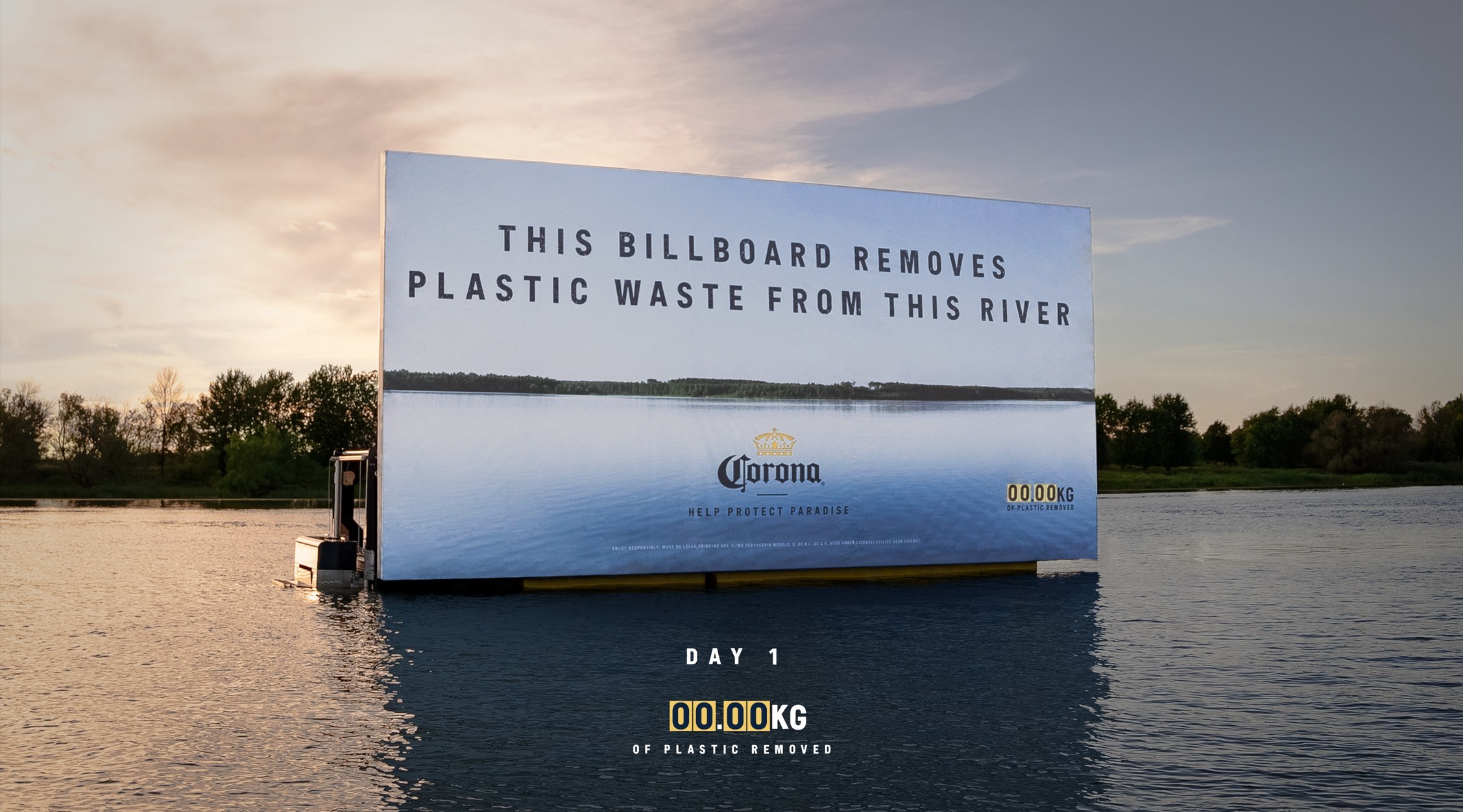
Corona Canada creates a plastic collecting billboard to reduce waste
by CM Staff

The beer company's marketing efforts are intended to demonstrate the company's work in reducing emissions.

Day one of the Corona Plastic Collecting Billboard launching in Boucherville, QC. Follow along @CoronaCanada for regular updates on the amount of waste collected by the billboard. (CNW Group/Corona Canada)
TORONTO — Corona Canada announces that it has launched a Plastic Collecting Billboard – a floating billboard that will collect waste from the St. Lawrence River in Boucherville, Quebec, throughout the month of September, until October 19th, 2022. The St. Lawrence River was selected as the location based on its role as the connecting waterway from the Great Lake system to the Atlantic Ocean, meaning the plastic pollution found in the St. Lawrence River can flow directly into the Atlantic Ocean.
Based on a 2021 statistic from Science Advances, 80 per cent of ocean plastic comes from 1,000+ rivers, globally, that feed into the ocean1.
“Since one-fifth of the world’s freshwater resources are located in Canada, the goal of the Plastic Collecting Billboard is to act as a symbol to raise awareness of the pollution rivers endure – ultimately flowing into the ocean – and to reinforce Corona’s commitment to helping remove waste from our shorelines and waterways,” said Mike Bascom, Sr. Marketing Director, Corona Canada.
“In addition to collecting waste from the St. Lawrence River in Quebec, Corona’s Plastic Collecting Billboard program will provide our team at Ocean Wise with some information, during the time the billboard is operating, that can be used to help quantify how much plastic pollution is flowing through the St. Lawrence River,” said Jeff Wint, Plastic Reduction Manager, Ocean Wise. “As a result, we can hopefully start to get an idea of the items being littered, types of plastic, and their sources.”